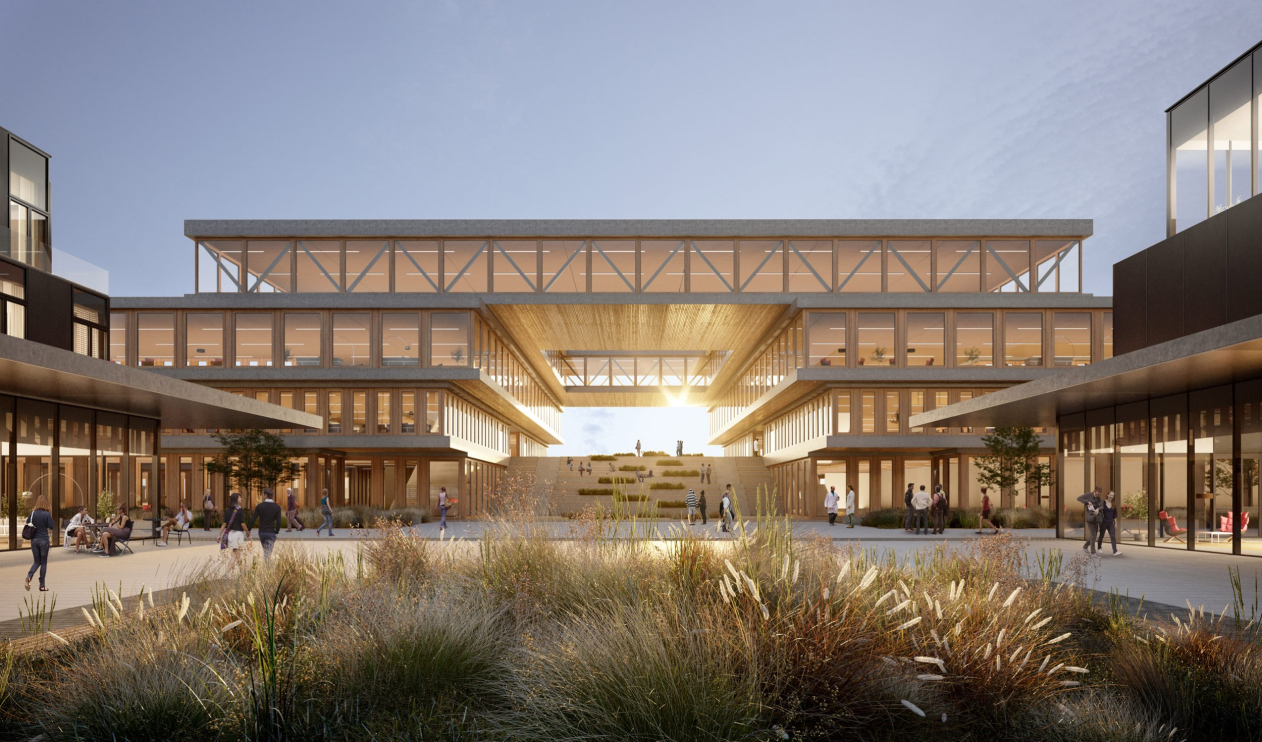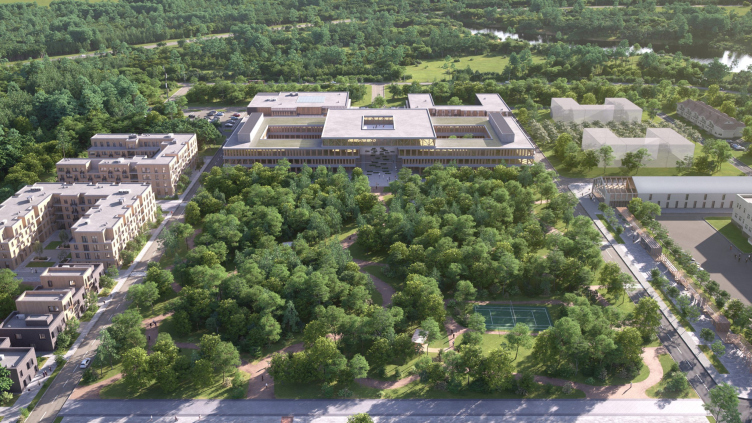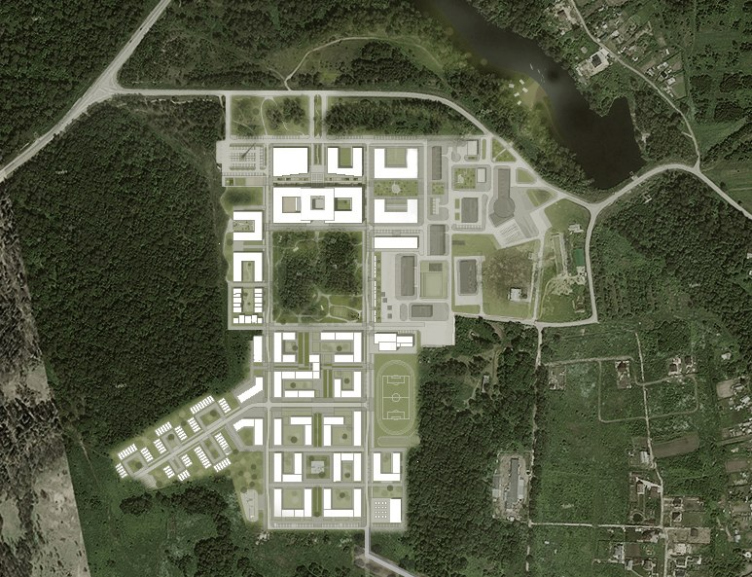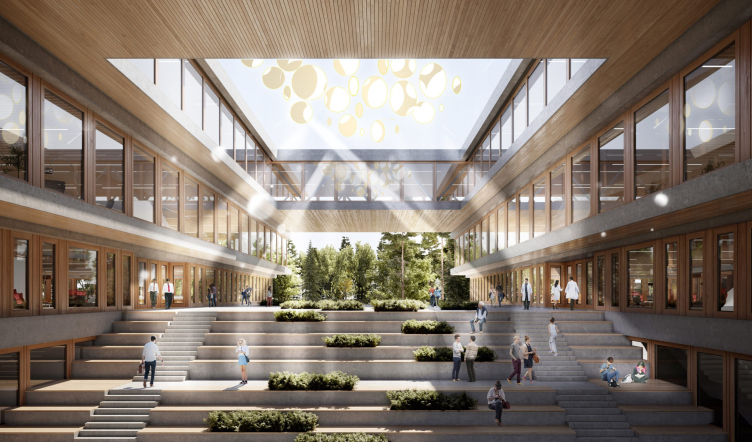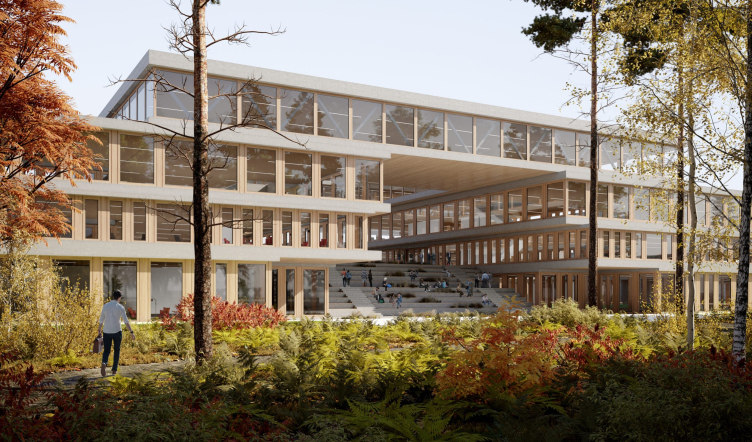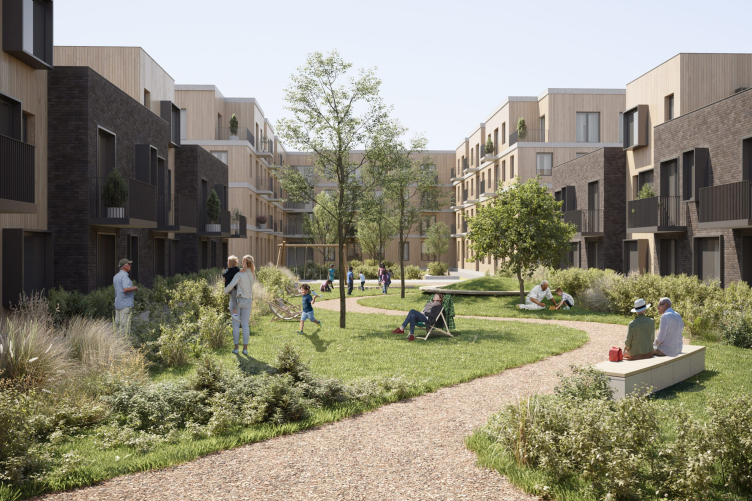The PM Mikhail Mishustin signed the decree on the creation of the NCFM on August 30, and the competition for the architectural and urban planning of the campus was held starting in the spring of 2021. The operator of the competition was Citymakers. The contestants were required to propose “an innovative sustainable architectural solution of space for future residents, combining opportunities for effective science and a comfortable life”. It was necessary to think through the layout of the territory, the organization of public spaces and the architecture of the buildings of the center.
The projects were developed by 6 architectural companies that reached the final: Timur Bashkaev, KAMEN Architects, Buromoscow, Kleinewelt Architekten, Studio 44, and DNK. The results were announced September 2, and the winner was the project submitted by DNK ag, developed by Natalia Sidorova, Daniel Lorentz, and Konstantin Khodnev.
The center will be built on the territory of the Sarov technology park, north of Satis settlement. From the south side, both the settlement, and Sarov, located a little more to the east, are surrounded by the forests of the Mordovsky Natural Reserve – but then again, there is a forest stepping up to the very future center, and even now there is a rectangular strip of forestland on the future campus grounds, which the architects are planning to preserve, surrounding it with campus buildings.
Architectural and urban planning of the National Center for Physics and Mathematics in Sarov, the winning project September 9, 2021
Copyright: © DNK ag
The forest fragment, the natural environment, and the parallels with the wooden houses of the employees of the restricted-entrance town Arzamas-16 became the main conceptual basis of the winning project developed by DNK ag.
The low-rise buildings: the science and educational complex, the library, the dormitory, and the residents of the teachers and researchers, as well as the hotel and the cultural center – are grouped along the contour of the preserved forest rectangle, a peculiar “forest plaza” of sorts, then continue down south, sprouting a small branch in the southwest part. According to the authors, what appears on the inside is a walking-distance space with a string of interconnected public sub-spaces, designed for pedestrians and cyclists. The cyclists will be able to move around both inside the complex and reach the city of Sarov, which is about 5 kilometers away.
Architectural and urban planning of the National Center for Physics and Mathematics in Sarov, the winning project September 9, 2021
Copyright: © DNK ag
The main building – the research center – is located to the north of the forest area and was designed in a very curious way: on the one hand, it is spread out with a clear preference for horizontal, which is very suitable for the style of any modern scientific campus – it is customary to build them without obvious centerpieces. On the other hand, its silhouette is pyramidal, which, according to the authors of the project, is intended to remind of the famous skyscraper of Moscow University, one of the founders of the new center in Sarov.
The pyramid is formed because the building consists of two three-story square volumes with large courtyards that accommodate auditoriums and laboratories, and one more, one-story square of the library, also with a hole in the center, installed on their “shoulders” along the central axis.
Architectural and urban planning of the National Center for Physics and Mathematics in Sarov, the winning project September 9, 2021
Copyright: © DNK ag
What it ends up being is a spectacular transparent link – a bridge floating in space between the two units of the main building. Below it, there is an amphitheater facing the forest – a place of communication, an almost indispensable element of modern educational and research spaces, welcoming, at the same time, to contemplate nature.
Architectural and urban planning of the National Center for Physics and Mathematics in Sarov, the winning project September 9, 2021
Copyright: © DNK ag
The building, transparent and light, rhymes with the natural environment and seems to even accentuate it, strives to be its continuation.
Architectural and urban planning of the National Center for Physics and Mathematics in Sarov, the winning project September 9, 2021
Copyright: © DNK ag
The facades of other buildings are also made of natural materials.
Architectural and urban planning of the National Center for Physics and Mathematics in Sarov, the winning project September 9, 2021
Copyright: © DNK ag
DNK ag architects define their project of the National Center for Physics and Mathematics as “a working model of the city of the future”. One can definitely agree with them: in the proposed imagery one can read an example of a campus that has been repeatedly described in fantastic literature: it is so high-tech that it can afford harmonious coexistence with nature, its preservation, admiration, contemplation, walks to “clear the registers” in front of the next brain by storm. A campus from the books of Isaac Asimov – when you go straight out of a transparent wall to the lawn or into the forest and start jogging – which has many examples of its embodiment in post-war modernist architecture, but in this case, adjusted for the relevance of the 21st century.
The project is scheduled to be implemented in 2024.
The judging panel:
Alexey Likhachev, General Director of the State Atomic Energy Corporation ROSATOM;
Victor Sadovnichy, President of Moscow State University;
Alexander Sergeev, President of the Russian Academy of Sciences;
Sergey Kuznetsov, Chief Architect of Moscow;
Anton Finogenov, Deputy General Director of the DOM.RF Foundation;
Andrey Gnezdilov, partner of the Ostozhenka architects;
Oleg Shapiro, co-founder of the WOWHAUS architects;
Alexey Novikov, President of Habidatum;
Sergey Zuev, President of the Moscow Higher School of Social and Economic Sciences;
Elena Bunina, General Director of Yandex Russia

